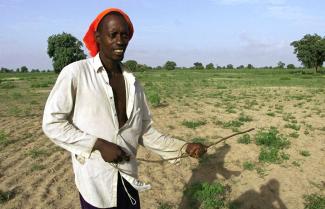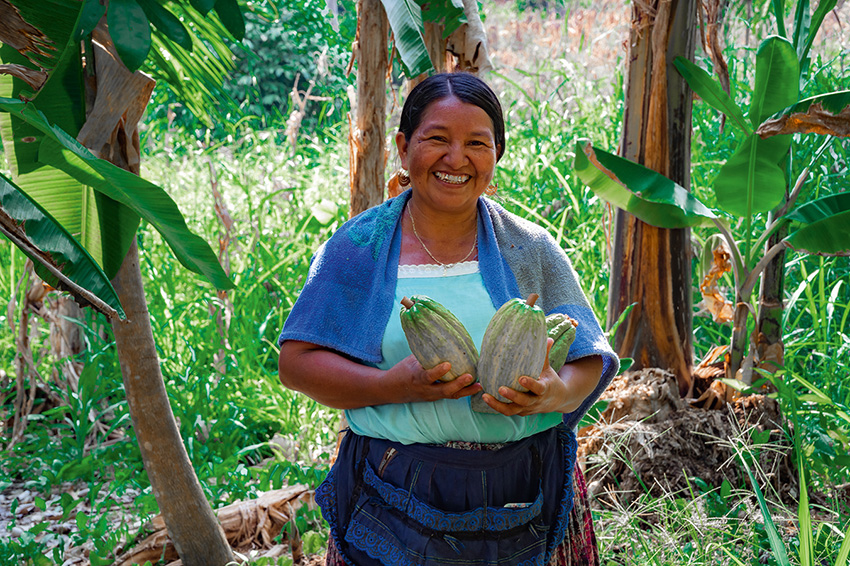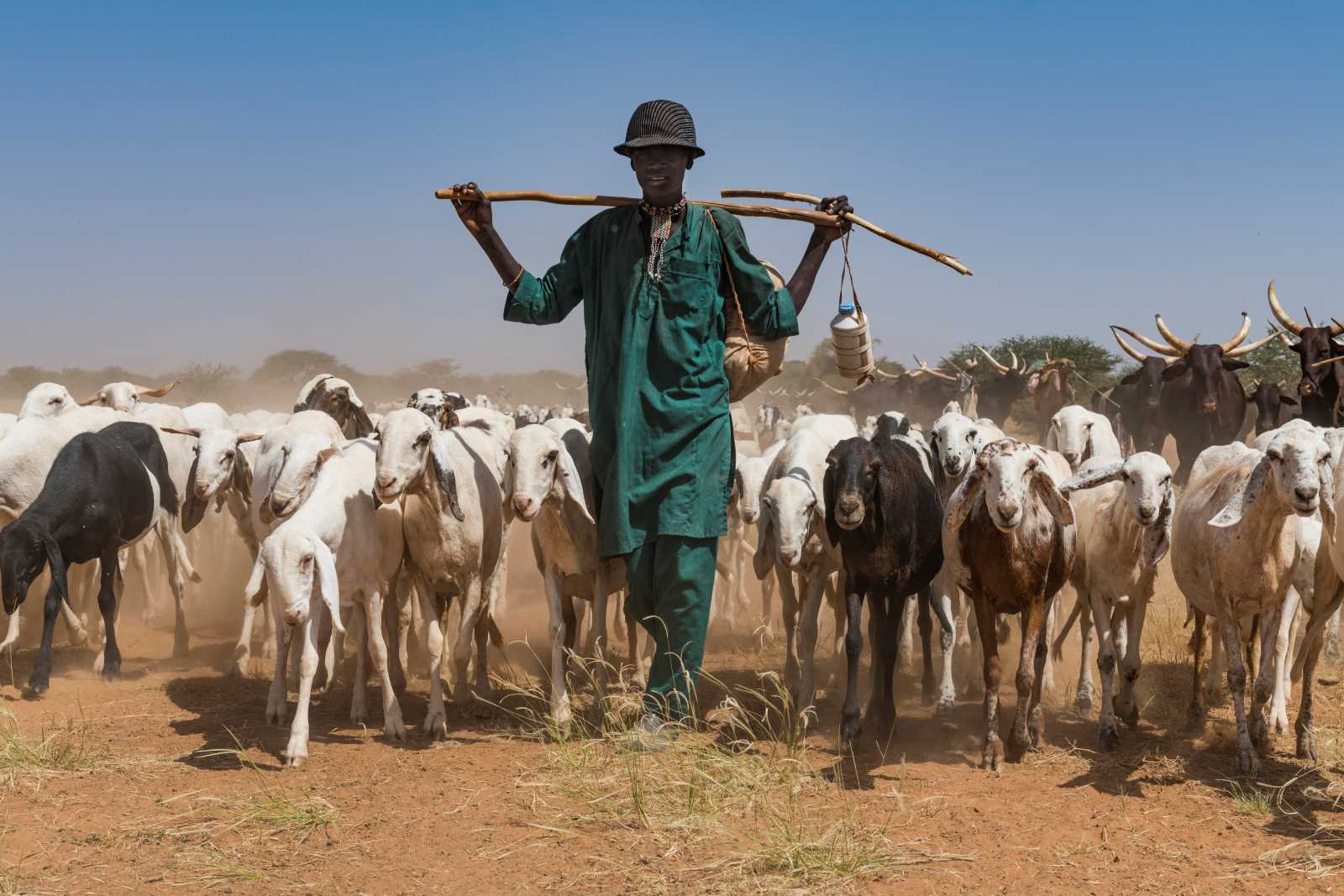Risks to humanity
“The most powerful driving force is climate change”

The earth system is changing faster than ever before. For example the populations of vertebrate animals have declined by about 60 % since 1970, according to the World Wide Fund for Nature (WWF). What other global environmental trends matter?
The most important trends with impacts on human life are:
- The loss of fertile soil and, as a result, agricultural lands. One consequence is that arid regions are expanding. Climate change is playing a central role in this kind of change, but so is improper, unsustainable farming. Compounding the problems, food production must increase because the world population is still growing, while less and less land is available for farming.
- The loss of water resources. Apart from climate change, the reasons are deforestation and the expansion of agriculture. Urban growth matters too, because cities consume a great deal of water.
- The loss of biodiversity. We are currently experiencing extinction on a scale never seen before in the history of human civilisation since the Neolithic Revolution some 10,000 years ago. This decline in species will impact the resilience of biological systems and the water cycle – with consequences that concern flooding, food production and, ultimately, human beings.
- The oceans. We talk a lot about plastic in the water, which is a symbol for how overburdened the oceans are. Biodiversity is declining there too. The loss of fish and other marine animals has a direct impact on human nutrition. Climate change, moreover, is contributing to the acidification of the oceans.
And I would like to mention one more thing: the finite supply of phosphorus is a major challenge in regard to agricultural production. Phosphorus reserves are dwindling and we do not yet have an alternative to this fertiliser. In sum, we are reaching the earth system’s planetary boundaries.
You have talked a great deal about loss. Are all the observable environmental changes negative, or are there positive developments as well?
Well, if you look at the dynamics, it’s clear that the developments are overwhelmingly negative. Of course, some dry regions may get more water in the future if climate zones shift due to global environmental change. But such isolated phenomena should not blind us to the fact that, overall, the trends are extremely bad. We must learn how to organise human development and prosperity for a world population that will soon amount to 10 billion people without breaching the planetary boundaries. That is one of the major global challenges in this century.
To what extent are the harmful environmental trends interrelated?
That is a central question, and it points directly to the climate problem. The most powerful driver of many of these developments – plastic pollution is an exception – is climate change. If we do not succeed in limiting global warming to 2 degrees Celsius, this trend will cause the most dramatic changes. The various dynamics are interrelated. If, for example, the earth continues to warm, the Amazon region will be increasingly at risk and may actually become a desert. That would impact water, soils and food security in Latin America, and most likely the stability of the continent’s societies too. Or take glaciers and the polar ice caps: if they melt, there will be fewer white surfaces on the planet. These surfaces reflect sun rays back into space, and thus limit warming. The melting therefore exacerbates global warming, and this is known as the albedo effect. There are dozens of domino effects of this kind. Global environmental changes are interconnected.
How many of these environmental trends are human-made?
Most of them are. The earth system has always been changing, but the big difference now is that the changes we are experiencing now have become incredibly fast. During the last ice age, which ended about 12,000 years ago, the climate system was three degrees cooler than in the pre-industrial period. Should climate protection fail, we may witness a similar increase within a single century. Biodiversity and ecosystems would struggle to adapt to such high-speed change. Disruptive transformations could occur. Tipping points would be reached, triggering processes that would overwhelm many societies. The underlying reason for these super-fast developments can be found in our economic system. The world economy is still very resource- and emission-intensive. It is overtaxing the earth’s ecosystems considerably. At the same time, the world population is growing, so the pressure is increasing more and more.
In your opinion, what are the most important starting points to stop the negative trends?
We need a wide range of global transformation processes:
- We have to transform our current mode of production and build a circular economy. We must recycle waste instead of consuming ever more resources.
- We have to build sustainable and climate-friendly cities. One important issue is mobility, another is building materials: cement, steel and glass are very harmful to the climate.
- We need an agricultural transformation.
- Energy systems must be decarbonised all over the world.
In order to achieve all this by the middle of the century, we have to invest in human development. People need education, health care and access to other essential goods. Our institutions and governments also have to do their part.
Many of the trends you have just assessed threaten us human beings. What are the greatest risks?
The greatest risk is climate change. It is the most powerful driver of many other dynamics. If we do not get climate change under control, we will not be able to solve many other problems. That is why it should be at the centre of our attention. In order to focus on it, however, we must simultaneously address social cohesion and justice. Otherwise we will not have the legitimacy needed to bring about the necessary transformations. Societies, companies and individuals find it hard to make such big changes.
What is our responsibility as individuals and what is the responsibility of policy-makers?
Two thoughts: as individuals, we cannot bring about major transformations on our own. Rules are needed, which is where governments come in. The economy must be reorganised. On the other hand, as citizens and consumers, we can make good or bad choices. Mobility, for instance, is a significant challenge. We can decide whether we consume a large or a small amount of resources and the level of emissions that this implies. There is no human right to owning an SUV or taking long-distance airplane flights. Another example is food waste. About 40 % of food in Germany is thrown away. The state can’t assume responsibility for these things. Doing the right thing is up to us.
Driving SUVs, throwing away leftover food – these sound like First-World problems ...
Yes, indeed. Generally speaking, the poorer half of the world population cannot do much as individuals to limit climate change. They are the victims of climate change, the ones who suffer the most but bear the least responsibility for the problem. That is an injustice.
There are already good international agreements to counter climate change, for instance the 2030 Agenda with its Sustainable Development Goals (SDGs) and the Paris Agreement. Is it enough to implement these international agreements?
Well, in regard to the climate agreement, let me say that so far we only have commitments that would solve about 40 % of the problems. We must aim much, much higher. Successfully implementing the SDGs wouldn’t solve every problem either, but it would be an enormous step forward. So far, the global community is not on the right track to making them come true however. That’s why the UN Sustainable Development Summit, which will take place in New York in September, will be so important. To answer your question as to whether all this is enough: the 2030 Agenda does not say that we are aiming for everyone to achieve the level of prosperity of, say, Europe or Costa Rica. In many areas, we are simply concerned with reaching minimum standards – like “decent work”, for instance. It would be wonderful to fulfil the agenda, but after 2030, we will have to set new goals. The same is true of the climate agreement: if we could limit warming to 1.5 degrees Celsius, we would be able to avoid the worst. Two degrees of warming would already mean that island nations would disappear. And if climate change were to be stopped – which we are nowhere near achieving yet – we would still need to do more to stabilise the earth system. That will remain a Herculean task for future generations.
Dirk Messner directs the Institute for Environment and Human Security of the United Nations University (UN-EHS) in Bonn and co-chairs the German Advisory Council on Global Change (WBGU).
messner@ehs.unu.edu












